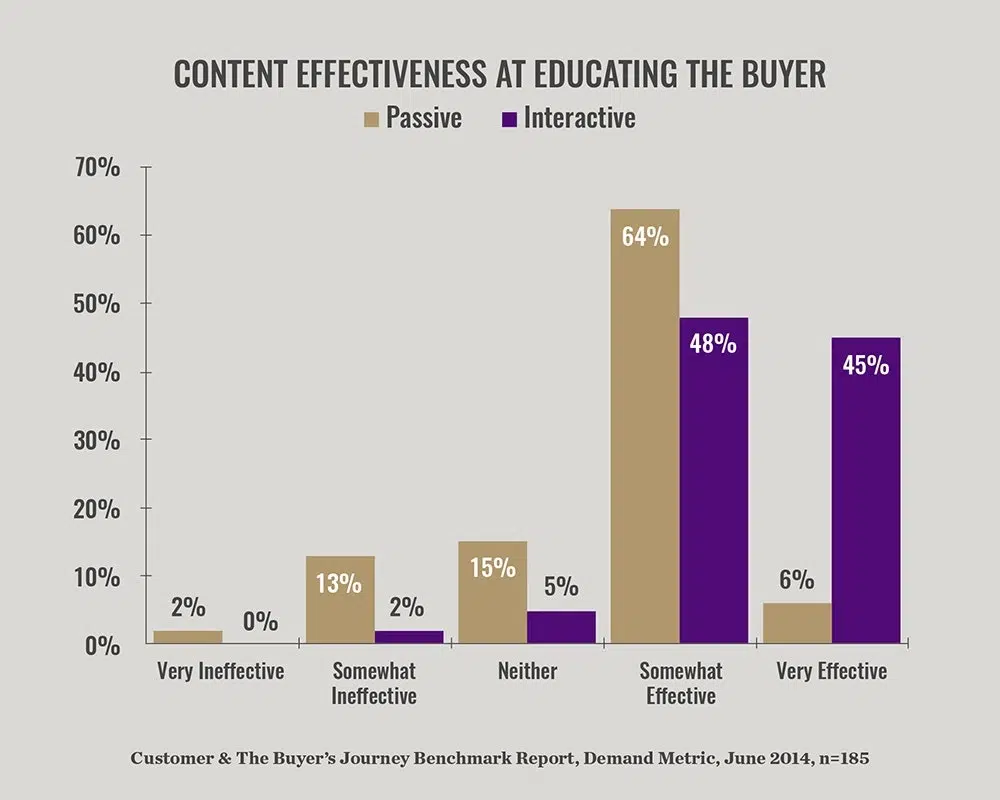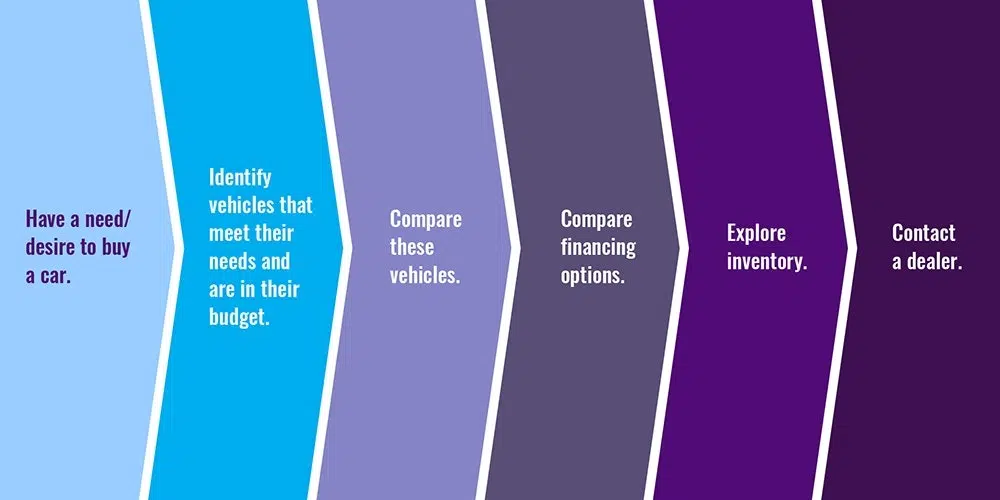Ebooks, guides, whitepapers. Gated content has long been the crux of content strategies. And with high pressure to show the impact of content marketing, why shouldn’t lead capture points be a priority? They should, but how we think about capturing leads may need a big overhaul. While I won’t completely argue against the efficacy of gated PDFs, particularly for direct response campaigns, I will ask this: could there be a more impactful way to drive (and nurture) leads?
To me, the answer is a resounding YES! When I challenge people on the topic of gated PDFs, I often get a lot of resistance. “But ebooks work!” is a statement I hear a lot when I argue we should focus more on interactive content and less on ebooks.
Lead Quantity vs. Quality
Never one to back down, I always counter with this, “but how are they ‘working’?” “Well, my lead gen rate is way higher when I use gated content.” Likely true, but what’s your lead to opp rate on those ebook leads? How long does it take to nurture those leads to a sale? And more often than not, the data either doesn’t exist to show these nurturing metrics or it paints a picture of brand awareness rather than direct sales impact.
At this point, I can usually get the marketer on the other end of this conversation to open up to the idea that interactive content could be an alternative. And almost every time, they ask something like, “so on that tool you made, the user needs to provide an email to get the answer, right?” Sigh. Well, yes sometimes that makes sense, but not always.
Breaking Out from the Tried And True
While we never want to place our own biases on strategic content decisions, our own behavior can be really impactful in understanding why gated content and email marketing cannot be the only solution. So I always ask, when was the last time you went on to make a purchase after downloading an ebook or a white paper? You probably don’t have many (or any) examples that jump to mind.
Moreover, when you downloaded that ebook, maybe the content was helpful, but you just weren’t ready to buy. Totally possible (and likely probable). At this point, you’ve probably been enrolled in an email nurturing program. So they’ve been emailing you for a year now, have you purchased? No? Right.
So does that mean their marketing programs are totally crappy? Not at all! They are staying top of mind with you and building brand rapport by (hopefully) providing relevant, helpful content.
The key here is that this strategy of email capture/email nurture used by most content marketers is quite passive. This may seem counterintuitive because the whole strategy is designed to re-engage buyers who didn’t have intent to buy. The problem is in many ways it ignores those who are ready to buy.
You may be thinking, “well what about gated case studies or bottom-of-the-funnel content?” Yes – gate these if the info you are capturing is leading to great sales calls and higher conversion rates! But this still doesn’t solve one problem: what about those middle-of-the-funnel site visitors?
And finally, for the big a-ha! For all the great gated content you do, interactive is still more impactful. In fact, 45% of marketers report that interactive content is very effective, while only 6% of marketers report passive content as being very effective.
Nothing about this data surprises me. As shoppers (and like many shoppers report), we want to do independent research. Your website visitors (those who are in purchasing mode) are already 57% of the way through their purchasing decision when they reach your site (according to the CEB) – that places them smack dab in the middle of your marketing funnel. If they’re in buying mode, they aren’t interested in your tactical top-of-the funnel ebooks, and they likely aren’t ready for your bottom-of-the-funnel case studies. They’re still exploring options, still conducting independent research. So why not give them a tool to conduct that research without locking them into receiving a sales call they may not want?
It Works, We’ve Seen It.
This isn’t just some conceptual BS. We’re seeing this have real impact for our clients. We had a car manufacturer come to us with a need to improve SEO and lead gen. Their buying process is very clear:
Rather than creating blog content and gated content for each of these steps, we created an interactive hub that allowed people to select their own path and enter and move through the content based on their needs and where they are in the buying process.
There’s no gate. There aren’t even super prominent bottom-of-the-funnel CTAs. The content is truly altruistic in allowing users to thoroughly vet the things we know they are going to vet anyway (whether or not they find that info on our site). We allowed them to do it at their own pace. And the results:
- The hub is the 3rd most organically visited section of the website
- Since its launch, organic search has increased 25% sitewide
- Users who land on the interactive content are 1.5X more likely to go on to become a lead during that session than users who land on passive content
- And those leads aren’t just email captures. They’re high-purchase-intent chats, schedule-a-consultation requests, and other highly qualified leads.
So what about interactive content is driving these results? On the organic side, that’s easy. It’s engagement: low bounce rates, multiple pageviews, lots of clicks, all that good interaction that shows Google people find your content useful.
On the lead gen side, while I cannot outright prove it, I think the answer is this: by providing educational content, you’re literally guiding visitors through the consideration process. And by leaving the content open, you’re allowing them to engage at their own pace, letting them make the decision to contact you, leading to more and higher quality leads.
Wrapping Things Up
Interactive content in no way eclipses the need for direct response marketing and lead gen tactics throughout the rest of the funnel, but ignoring it because it’s expensive or because it doesn’t have a one-to-one lead gen point can no longer be an option for content marketers. For one, with plugins and other technology, interactive content doesn’t have to be expensive. And because there’s other ways to measure the impact than filling out a form on a specific page, like how we’ve tracked the buying hub above to other lead gen points on the site. And because the data doesn’t lie. Interactive content works.
Get creative – think about how your customers want to shop and not just how you want them to shop. The right balance between UX and CRO is usually where we see the largest marketing impact. And interactive content can help you find that crossroads.








